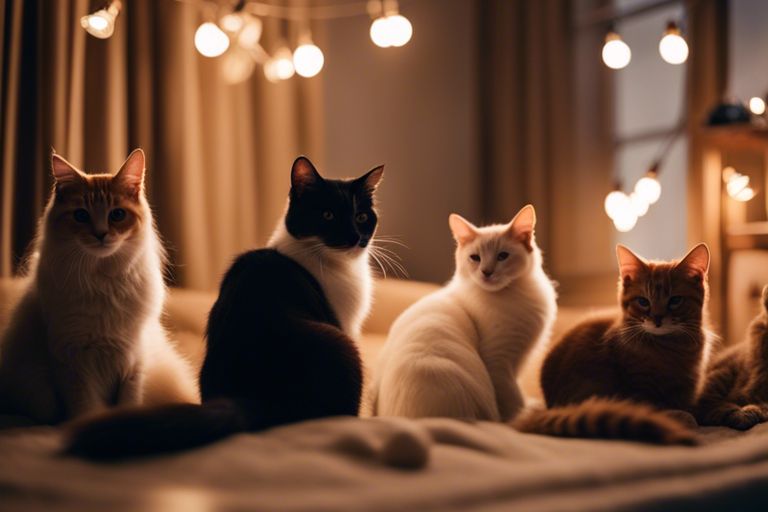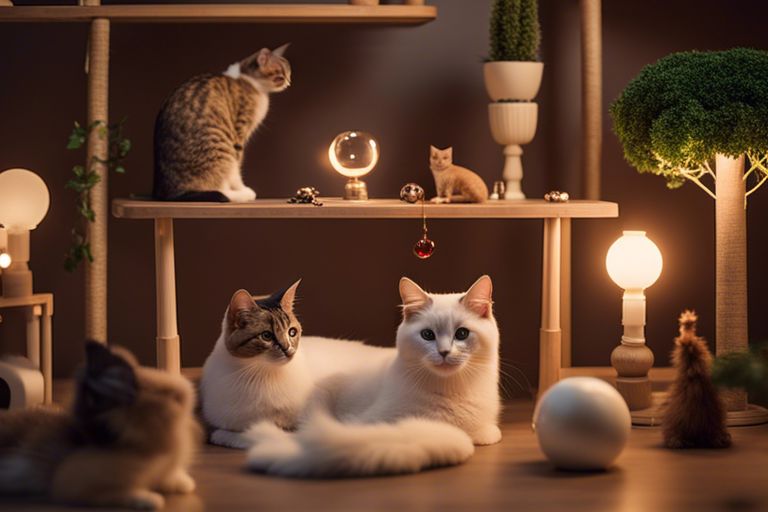You may be experiencing the complexities of managing a multi-cat household dynamic, and it can certainly be overwhelming. However, it is essential to understand the potential challenges and benefits of living with multiple cats under one roof. From territorial issues to social interactions, each feline has its own unique personality and needs, which can sometimes lead to conflicts. In this blog post, we will provide you with tips and strategies for effectively managing a multi-cat household dynamic, so you can create a harmonious and peaceful environment for your furry companions. Whether you are dealing with aggression, stress, or simply looking to improve the overall well-being of your cats, we have got you covered. Get ready to become a pro at handling the dynamics of a multi-cat household!
Establishing a Harmonious Environment
A harmonious environment in a multi-cat household is crucial for maintaining peace and reducing conflicts between your feline companions. Here are some key factors to consider when creating a harmonious environment for your cats.
Adequate Resources for All Cats
In a multi-cat household, it’s essential to ensure that each cat has adequate resources such as food, water, litter boxes, and resting areas. Make sure there are multiple feeding stations and water bowls to prevent competition for resources. Similarly, provide multiple litter boxes placed in different areas of the house to avoid territorial disputes. Additionally, each cat should have access to comfortable resting spots and scratching posts to fulfill their individual needs. By providing enough resources for each cat, you can minimize conflicts and create a more peaceful coexistence.
The Role of Territory in Cat Behavior
Territory plays a significant role in cat behavior, and understanding this can help you manage the dynamic in a multi-cat household. Cats are territorial animals, and they may become stressed or aggressive if they feel their territory is being invaded. To mitigate this, create multiple vertical spaces such as cat trees, shelves, and window perches to allow each cat to claim their own territory. This way, they can share the same living space without feeling threatened. It’s also important to provide hiding spots and secluded areas where each cat can retreat to when they need alone time. By respecting their need for personal space and territory, you can help reduce tension and create a more harmonious environment.

Introducing New Cats
Obviously, introducing a new cat to your multi-cat household can be a delicate process. It’s important to take your time and handle the introduction with care to ensure a smooth transition for all of your feline companions.
Isolation
When bringing a new cat into your home, it’s crucial to isolate them in a separate room for the first few days. This will allow them to get used to their new surroundings without feeling overwhelmed by the presence of the other cats. Make sure this room has all of the necessities including food, water, litter box, and a comfortable place to sleep. During this time, you should spend quality time with the new cat, helping them to feel secure and comfortable in their new environment while slowly introducing your scent to them.
Gradual Introduction
After the initial isolation period, you can begin to gradually introduce the new cat to the rest of your feline family. Start by allowing the cats to sniff each other under the door, and then slowly start to exchange bedding so they become familiar with each other’s scents. When you feel that they are ready, you can start to let them see each other through a baby gate or cracked door, always supervising their interactions closely. This gradual introduction will help to minimize stress and potential conflicts between the cats.
Supervised Interactions
Once the cats have shown signs of acceptance towards each other, you can start to supervise their interactions in the same room. Make sure to keep a close eye on their body language and behavior, and be prepared to separate them if any signs of aggression or tension arise. It’s important to be patient during this process, as it may take some time for the cats to fully adjust to each other’s presence.
Positive Reinforcement
Throughout the entire introduction process, it’s important to reinforce positive behavior with treats, toys, and affection. This will help to create positive associations with each other and make the transition smoother. Remember, each cat is an individual with their own personality and needs, so be patient and understanding as they adjust to the new dynamic in your multi-cat household.
By following these steps, you can successfully introduce a new cat to your multi-cat household and help ensure a harmonious and peaceful coexistence among all of your feline companions.














